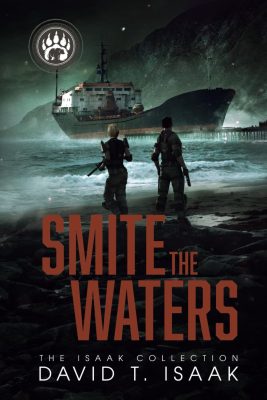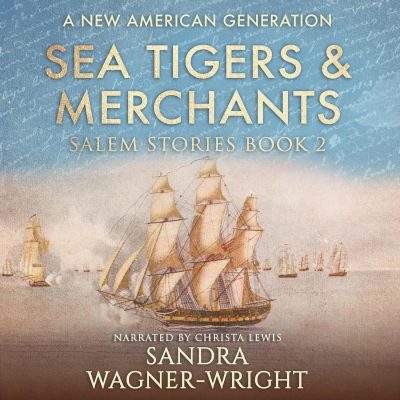|
Listen to or download this article:
|
 In The Silver Waterfall, author retired U.S. Navy Captain Kevin Miller reveals the intricate and deadly turns of the Battle of Midway, a combat shaped by transforming warfare, and one that would in turn shape the rest of WWII’s Pacific Theater.
In The Silver Waterfall, author retired U.S. Navy Captain Kevin Miller reveals the intricate and deadly turns of the Battle of Midway, a combat shaped by transforming warfare, and one that would in turn shape the rest of WWII’s Pacific Theater.
After their surprise attack on Pearl Harbor, the Japanese Navy seeks to draw American aircraft carriers into an ambush, to secure Japanese power over the Pacific. In a time of great upheaval for warfare technology, aircraft carriers dominated both sea and sky. So, to destroy the USS Enterprise, Yorktown, and Hornet, Chūichi Nagumo— commander of the Japanese First Air Fleet— brings to bear his own four carriers, HIJMS Akagi, Hiryū, Kaga, and Soryu.
But the Americans had cracked the Japanese communication codes, so as the First Air Fleet launches their provoking attack against the Midway Islands, the American carriers are already steaming into position. From June 4th to June 6th of 1942, planes filled the skies above the remote Pacific waters, both American and Japanese pilots dashing back and forth, knowing that either they sink the enemy’s carriers, or they’ll have none of their own to return to.
Author Miller, author of the highly-rated Raven One trilogy of contemporary carrier aviation, draws on his experience as a former carrier-based fighter pilot to place the readers into the shoes of commanders, strategists, pilots, and gunners alike.
Readers get a glimpse into the intricate planning and communication involved with this sort of naval warfare, as each character struggles to glean the information vital to their own success— and survival. This is a warfare of radio, fuel tank ranges, hand-drawn plotting boards, and cloud cover. Characters clash over the right move, knowing that any mistake could cost their lives and more.
Amidst all this detailed information, however, The Silver Waterfall takes time to shown the humanity of its characters. Though specific moments and personal dynamics are fictional, each character was a real person in the Battle of Midway. Their little conflicts with each other, their moments of bonding, and the lives that they hope against the odds to return to, become palpable. And every bit of personal charm lives under the shadow of their next flight.
From the bunks of the aircraft carriers to the cockpit of a Devastator torpedo plane, neither characters nor readers can escape an imposing sense of danger, the ever-present possibility that someone’s unique, full life will be snuffed out in a cloud of black smoke.
The Silver Waterfall takes on a massive amount of information, given the complex nature of real naval warfare.
Readers will have to pay close attention to understand the events of the battle, as planes take flight time and time again. Thankfully, Miller provides a list of commanders and naval jargon/acronyms, so those unfamiliar with this specific setting will be able to grasp the details. As well, a few helpful diagrams throughout the book keep locations clear— a luxury not afforded to those in the battle itself.
Though each side pores over their plans, information is precious and incomplete. The Japanese strategist Genda argues with his superiors as they wait for confirmation on the presence of enemy carriers, just as John Waldron— Commanding Officer of Torpedo Eight— pleads for a fighter escort, knowing that death awaits his pilots without one. But even solid plans have fractures and crack apart amidst tracer rounds and enemy pursuit.
The dynamics between different groups of pilots stand out amongst the chaos, with torpedo planes (“torpeckers”) and bombing squadrons relying on scouts and fighters to bring them into— and more importantly out of— enemy fire. Tensions rise with every miscommunication and bad decision, as everyone must grapple with the fact that they hold someone else’s life in their hands.
The Battle of Midway is filled with personal weight. Characters on both sides become easy to empathize with.
The Japanese pilots are much like the American ones— sent to kill and die for the sake of their country. They share the fear of death, the thirst for vengeance as their comrades fall out of the sky or into the flames of a dying carrier, and heartbreaking moments of grief— all the more horrible for the fact that they can’t take but a moment away from the fight.
Knowing these characters at a personal level makes each flight gripping. Will Taisuke Maruyama somehow escape the storm of anti-aircraft fire from the American ships? Is Bill Evans really going to follow his CO Waldron to his death? Will Lloyd Childers ever get to pay Darce the money he owes him? Or, will these young men be lost? Readers will feel the importance of each answer they receive.
More than anything, The Silver Waterfall confronts the horrific impact this battle has on the people who wage it.
Grief turns to rage, the flames fanned by racism, national supremacy, and the unrelenting, unpredictable chance of death. Miller shows that for every kill made in the name of a fallen warrior, a soldier on the other side etches another name into their memory. But to speak of rage and revenge alone wouldn’t do these pilots and gunners justice.
It takes monumental feats of bravery for these soldiers to get in their planes and fly into danger. Readers sit with them in those terrible seconds of watching a compatriot go down, and the true comradery of the pilots looking out for one another. They yearn for the glory of a hit on an enemy carrier. They act for their cause despite death all around them. And in an ocean of violence and terror, their humanity, their compassion reminds the reader that these are not just soldiers— they’re boys, some no older than nineteen.
But this story saves its deepest sorrows until the quiet after the battle, as the characters themselves must do the same.
With pathos and intricate detail, The Silver Waterfall makes for a fulfilling read.
Fans of historical fiction will appreciate the clear amount of research that went into this novel, which illuminates the back and forth aircraft carrier warfare in one of its earliest and most impactful forms. Readers of all sorts will end the book with a greater understanding of one of WWII’s most pivotal battles— an understanding both factual and emotional.











Leave A Comment